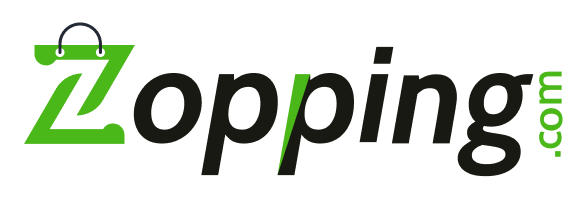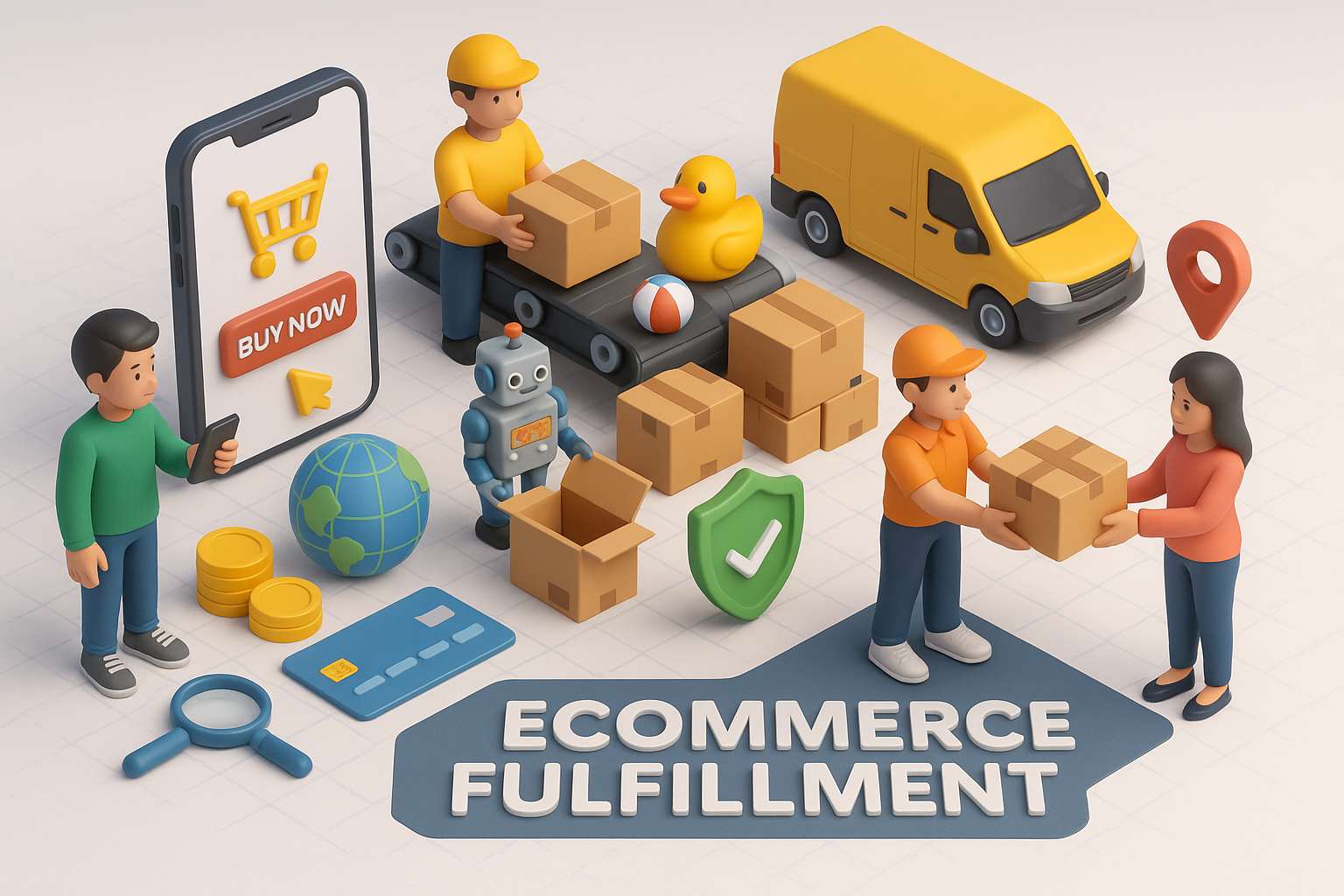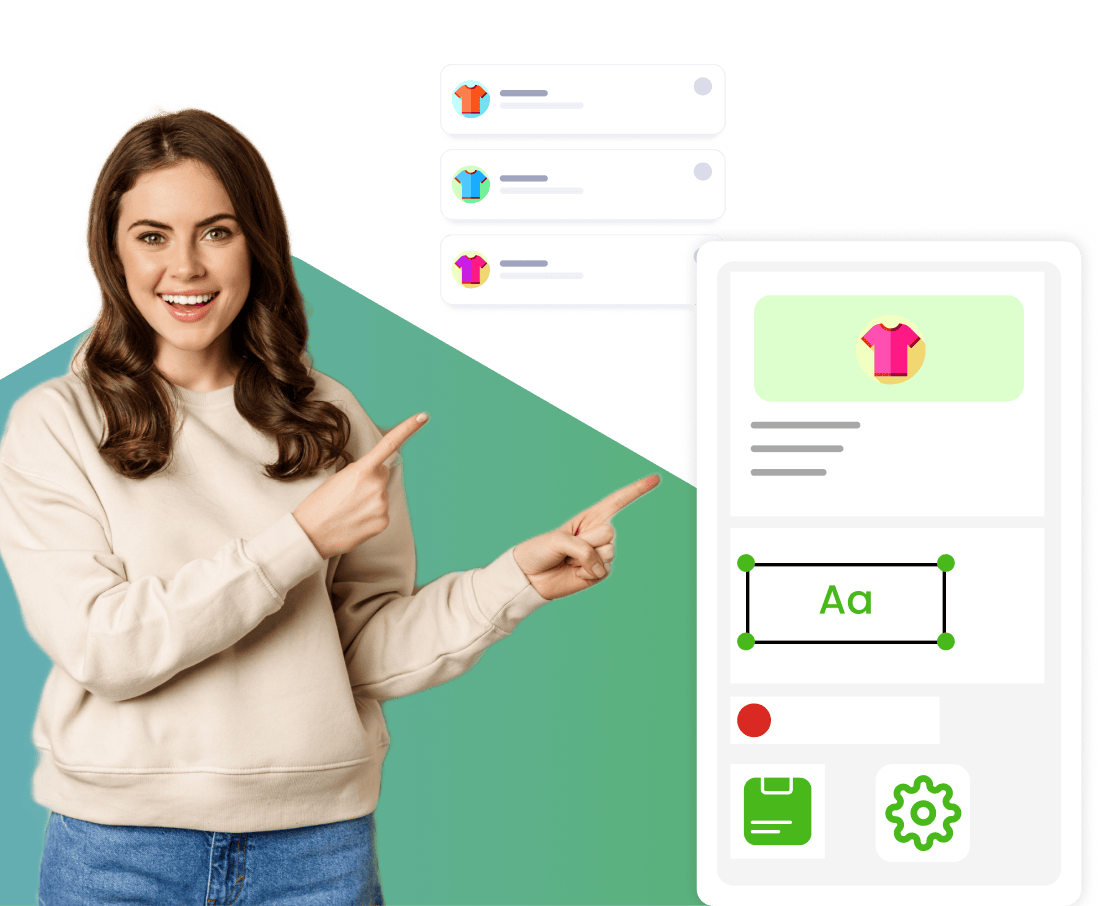Quick Links
ToggleWhen you run an online store, getting the product to your customer’s doorstep is just as important as the product itself. That’s where ecommerce fulfillment comes in. It’s the behind-the-scenes process that starts the moment a customer places an order and ends when they receive it. If you’re wondering how that process works or why it matters, you’re in the right place.
Key Takeaways
- Ecommerce fulfilment covers receiving inventory, storing products, processing orders, picking and packing, shipping, and handling returns
- You can run fulfilment in house, outsource to a third party, use Amazon FBA, mix models with a hybrid setup, or try dropshipping based on your scale and control needs
- Outsourcing can cut costs, speed delivery, and free you to focus on growth, but watch for hidden fees, stock visibility gaps, and slower issue resolution
- Strong operations rely on automation for orders and inventory, clear returns, reliable carriers, and unified systems across online and retail touchpoints
- For faster delivery, place inventory closer to buyers with micro fulfilment or dark stores in high demand areas and tighten picking and routing workflows
Let’s take a closer look at it so you can understand what goes into smooth and reliable order fulfillment.
What is Ecommerce Fulfillment?
Ecommerce fulfillment is the process that takes over after a customer places an order on your online store. It covers everything from receiving the order to making sure the product reaches the customer safely and on time. This includes storing your inventory, picking and packing the right products, shipping them out, and even handling returns. It’s the behind-the-scenes engine that keeps your online business running smoothly and keeps customers happy.
If you’re running an online store or planning to start one, understanding this process is important. A smooth and reliable fulfillment system can help you build trust, reduce delivery errors, and manage customer expectations better.
Ecommerce Fulfillment Process: Step-by-step Guide
Here’s how ecommerce fulfillment usually works, step by step:
-
Receiving Inventory
Before you can ship anything, you need to stock your products. This step involves receiving products from manufacturers or suppliers and checking that everything is correct and in good condition. Once the inventory is in, it’s stored at a warehouse or fulfilment centre.
-
Storing the Products
After receiving, your products need to be organised and stored properly. A well-managed storage system helps your team (or your fulfilment partner) locate products quickly when an order comes in. This is especially helpful when you’re dealing with a large number of SKUs or high order volume.
-
Processing Orders
When a customer places an order, the system notifies the warehouse or fulfilment centre. At this point, the backend process kicks in. Order details are verified, and the system makes sure the product is in stock and ready to ship.
-
Picking and Packing
Warehouse staff then “pick” the ordered items from their storage locations. Once picked, the items are packed using suitable materials to protect them during transit. Packaging also plays a role in branding and customer experience, so it’s worth paying attention to.
-
Shipping
After packing, the order is handed off to a shipping partner or courier service. Depending on the delivery location and shipping method chosen by the customer, the package is sent out for last-mile delivery. Tracking details are usually sent to the customer during this stage.
-
Returns Management
Sometimes, customers return products due to defects, wrong sizes, or just a change of mind. A strong ecommerce fulfilment system also handles returns in a structured way. Returned products are inspected, restocked if possible, or discarded, and refunds or exchanges are processed quickly.
Optimise Your Product & Inventory Flow with Zopping
Zopping provides real-time stock updates, ensuring you always know what’s available. With automated low-stock alerts, you can restock products before running out.
Contact UsE-commerce Fulfilment Options
Here’s a closer look at some of the most popular e-commerce fulfilment options:
-
In – House Fulfilment
What it is:
In-house fulfilment means you handle everything yourself. You store the products, pack the orders, and ship them out. All of it happens under your control using your own space, tools, and team.
Why consider it:
If you want full control over your inventory, packaging, and shipping, this is a solid option. It works well when you are just starting out, or if your order volume is manageable. In-house fulfilment gives you complete oversight, which is helpful for building a custom brand experience. It can also be more affordable if you already have space and staff. But keep in mind, as orders increase, this model can become harder to scale without extra help or automation.
-
Outsourced Order Fulfilment
What it is:
With this model, you send your inventory to a third-party logistics company. They store your products and take care of picking, packing, and shipping orders as they come in.
Why consider it:
This is a smart move if you want to save time and focus more on marketing, product development, or customer support. It takes the load off your team and often speeds up delivery through better logistics networks. Outsourced fulfilment is helpful when you’re scaling fast and don’t have time to manage the backend. You lose some control, but gain efficiency and access to fulfilment expertise.
-
Amazon FBA (Fulfilment by Amazon)
What it is:
Amazon FBA lets you sell your products on Amazon while they handle the fulfilment. You send your items to their warehouse, and they take care of the rest, including storage, delivery, customer service, and returns.
Why consider it:
If you want to tap into Amazon’s massive customer base and enjoy fast shipping through Prime, FBA is a strong choice. It takes away the burden of managing orders and builds trust with customers. However, fees can add up, and branding options are limited since everything is packed in Amazon’s standard packaging. It’s great if most of your business is on Amazon and you want hassle-free logistics.
-
Hybrid Fulfilment
What it is:
Hybrid fulfilment combines different models. You might manage some orders in-house, use a third-party logistics provider for others, and also sell through Amazon FBA. It’s a mix-and-match approach tailored to your business needs.
Why consider it:
This gives you flexibility. You can keep control over some orders while outsourcing the rest. For example, you might fulfil local orders yourself for faster delivery and use Amazon or a third-party logistics provider for national or international shipping. A hybrid setup helps you optimize costs, expand reach, and adjust your strategy as you grow. But it also requires good coordination and tracking systems to keep everything running smoothly.
-
Dropshipping
What it is:
In dropshipping, you don’t keep any products in stock. Instead, when a customer places an order, you forward it to a supplier who ships the item directly to the customer. You act as the middleman between the buyer and supplier.
Why consider it:
If you want to start an online store without investing in inventory, this is the easiest way in. You don’t need storage space or a shipping team. It’s low-risk and quick to set up. But margins are usually lower, and you have little control over product quality or shipping speed. It’s ideal for testing new product ideas or running a business with minimal overhead.
Benefits of Outsourcing E-commerce Fulfilment
Here are the benefits of outsourcing eCommerce fulfilment:
-
Cost Optimization and Scalability
Managing your own warehouse, staff, and tech systems can quickly become expensive. When you outsource fulfilment, you shift those costs to a third party that already has the infrastructure. You only pay for what you use, which helps you scale easily as your business grows or during peak seasons without hiring extra staff or expanding storage.
-
Access to Expertise and Technology
Fulfilment companies do this every day. They’ve invested in systems that track inventory, automate order processing, and streamline shipping. By partnering with them, you get access to that level of expertise and technology without having to build it yourself. It’s like plugging into a ready-to-use backend that knows how to move products faster and more accurately.
-
Focus on Core Business Activities
Outsourcing gives you more time to focus on the things that move your business forward. Instead of spending your energy on packing boxes or figuring out carrier delays, you can double down on marketing, product development, and customer service. Fulfilment becomes one less thing to worry about.
-
Expanded Reach and Market Access
Third-party logistics providers often have fulfilment centers in multiple locations. This allows you to ship to customers faster and at lower costs. Some even offer international shipping options, so you can expand into new markets without opening warehouses in other countries.
-
Improved Customer Experience
Fast, accurate delivery is a big part of a shopper’s experience. Fulfillment partners are set up to process orders quickly and efficiently. With automated tracking, reliable packaging, and faster shipping times, your customers receive a smoother experience, which helps build loyalty and trust in your brand.
Zopping Makes E Commerce Fulfilment Smarter From Inventory to Doorstep Delivery
Get a DemoE-commerce Fulfilment Challenges
-
Inventory Management Complexity
When you outsource, your inventory sits in someone else’s warehouse. That means you need to be extra careful about stock visibility and updates. Without proper coordination, you risk running out of stock or overselling products you don’t have. Syncing your systems and keeping data accurate becomes even more important.
-
Shipping and Delivery Disruptions
Even the best fulfilment companies can face delays due to weather, strikes, or carrier issues. Since you’re not directly handling the shipping, solving problems can take longer. Customers expect quick answers, so you need to stay on top of communication and have systems in place to deal with delays quickly.
-
Cost Management and Optimization
Outsourcing helps save costs, but it can also bring hidden fees. Charges for storage, packaging, or special handling can add up. If you’re not regularly reviewing your fulfilment invoices and understanding the fine print, you might end up spending more than expected.
-
Returns Management and Reverse Logistics
Handling returns can get complicated when someone else manages your products. You need to be sure your fulfilment partner has a clear and efficient returns process. A slow or confusing returns experience can turn customers away and hurt your brand’s reputation.
How to Optimise E-commerce Fulfilment?
Here’s how you can optimise your e-commerce fulfilment operations:
-
Automate Your Orders and Inventory
Managing orders and inventory by hand is not just slow, it’s risky. Automating these tasks saves you from stock errors and delays. With the right tools, you can track inventory in real time, process orders as they come in, and even get alerts when stock runs low. This way, your store stays ready, your customers get what they want, and you don’t waste time fixing manual mistakes.
-
Leverage Your Logistics
You don’t need to build your own delivery empire. Partnering with trusted logistics services helps you scale faster without stretching your resources. Focus on reliable shipping partners who offer real-time tracking, fast delivery, and proper handling. If you manage deliveries in-house, route optimisation software can help you save fuel and deliver faster. A smoother back-end means happier customers on the front-end.
-
Revolutionise Your Returns
Returns are part of the game, but how you handle them makes all the difference. A clear and simple return policy builds customer trust. Make the process easy by offering prepaid return labels, quick refunds, and clear communication. Streamlining your return system also helps you manage restocking, damaged goods, and refunds efficiently. This turns a potential problem into an opportunity to build customer loyalty.
-
Robust Your Retail Game
A strong retail setup means having more than just an online presence. Think about how your digital store connects with physical touchpoints, customer service, packaging, and product experience. Invest in tools that sync inventory across channels, support multi-location sales, and help your team respond faster. The stronger your retail game is behind the scenes, the smoother things will run for your customers.
-
Quick Ways of Quick Commerce
Speed matters. If you’re in the business of quick commerce, every second counts. Use micro-fulfilment centers or dark stores near high-demand areas to shorten delivery times. Optimize your order picking system so it’s fast and error-free. Equip your team with the right tech so they can move quickly. The goal is to get products to your customer as fast as possible without cutting corners on quality.
Frequently Asked Questions (FAQs)
What is a fulfilment partner?
A fulfilment partner is a third party company that helps you handle the back-end work of your online store. They take care of storing your products, packing orders, and shipping them to your customers. Many online businesses, big and small, work with fulfilment partners to speed up delivery and manage orders more efficiently.
Should I use an ecommerce fulfilment provider?
If you run an online store and want to save time on packing and shipping, a fulfilment provider can make your life easier. You won’t need to hire a team or rent a warehouse. The provider handles everything for you. This kind of support helps you focus more on growing your business while a trusted team takes care of your orders.
How much does e-commerce fulfilment cost?
The cost depends on a few things, like how many orders you ship each month, how big your packages are, and how much space your products take up. You’ll usually pay for picking and packing each order, the boxes, the storage space, and the actual shipping. Some companies also charge monthly fees if your orders are below a minimum. If you want extra services like barcoding or putting products together in kits, there may be additional charges.
What is the difference between e-commerce and fulfilment?
E-commerce is all about selling products online. Fulfilment is what happens after someone places an order. It includes storing products, packing orders, and getting them delivered. You can’t have successful e-commerce without smooth and reliable fulfilment.
What is the difference between fulfilment and shipping?
Fulfilment covers everything from storing your products to packing them up when someone buys. Shipping is just the final step, where a delivery company picks up the packed order and brings it to your customer. Fulfilment gets the order ready, and shipping gets it to the doorstep.



